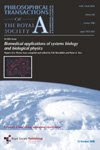The full chart shows Xenon-133 dispersion 27 March 2011 for the northern hemisphere:
The following charts are from the UK site, Weatheronline and can be followed day by day:
Iodine-131 Northern hemisphere - radiation | FLEXPART: dispersion model
Xenon-133 - Northern hemisphere - FLEXPART: dispersion model
Caesium-137 - Northern hemisphere - FLEXPART: dispersion model
I have also added a video to my wall above my posts.
Learn more on radioactivity via wikipedia:
Radioactivity
Ionizing Radiation
Xenon
Naturally occurring xenon is made of nine stable isotopes, the most of any element with the exception of tin, which has ten. Xenon and tin are the only elements to have more than seven stable isotopes.[61] The isotopes 124Xe, 134Xe and 136Xe are predicted to undergo double beta decay, but this has never been observed so they are considered to be stable.[62] Besides these stable forms, there are over 40 unstable isotopes that have been studied. 129Xe is produced by beta decay of 129I, which has a half-life of 16 million years, while 131mXe, 133Xe, 133mXe, and 135Xe are some of thefission products of both 235U and 239Pu,[60] and therefore used as indicators of nuclear explosions. Ref Wikipedia
I have also added a video to my wall above my posts.
Learn more on radioactivity via wikipedia:
Radioactivity
Ionizing Radiation
Xenon
Naturally occurring xenon is made of nine stable isotopes, the most of any element with the exception of tin, which has ten. Xenon and tin are the only elements to have more than seven stable isotopes.[61] The isotopes 124Xe, 134Xe and 136Xe are predicted to undergo double beta decay, but this has never been observed so they are considered to be stable.[62] Besides these stable forms, there are over 40 unstable isotopes that have been studied. 129Xe is produced by beta decay of 129I, which has a half-life of 16 million years, while 131mXe, 133Xe, 133mXe, and 135Xe are some of thefission products of both 235U and 239Pu,[60] and therefore used as indicators of nuclear explosions. Ref Wikipedia
137Cs with a half-life of 30.17 years is one of the two principal medium-lived fission products, along with strontium-90, which are responsible for most of the radioactivity of spent nuclear fuel after several years of cooling, up to several hundred years after use. It constitutes most of the radioactivity still left from the Chernobyl accident. 137Cs beta decays to barium-137m (a short-lived nuclear isomer) then to nonradioactive barium-137, and is also a strong emitter of gamma radiation. 137Cs has a very low rate of neutron capture and cannot be feasibly disposed of in this way, but must be allowed to decay. 137Cs has been used as a tracer in hydrologic studies, analogous to the use of 3H.
Iodine-131 (half-life 8 days) is a beta-emitting isotope, which is a common nuclear fission product. It is preferably administered to humans only in very high doses which destroy all tissues that accumulate it (usually the thyroid), which in turn prevents these tissues from developing cancer from a lower dose (paradoxically, a high dose of this isotope appears safer for the thryoid than a low dose). Like other radioiodines, I-131 accumulates in the thyroid gland, but unlike the others, in small amounts it is highly carcinogenic there, it seems, due to the high local cell mutation due to damage from beta decay. Because of this tendency of 131I to cause high damage to cells that accumulate it and other cells near them (0.6 to 2 mm away, the range of the beta rays), it is the only iodine radioisotope used as direct therapy, to kill tissues such as cancers that take up artificially iodinated molecules (example, the compound iobenguane, also known as MIBG). For the same reason, only the iodine isotope I-131 is used to treat Grave's disease and those types of thyroid cancers (sometimes in metastatic form) where the tissue that requires destruction, still functions to naturally accumulate iodide.









